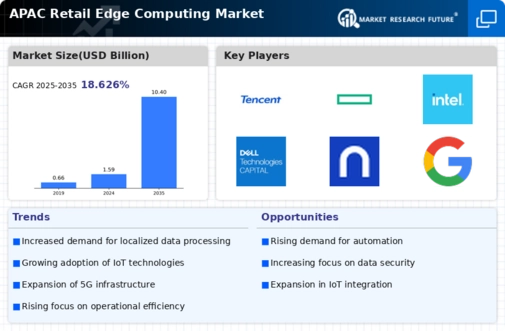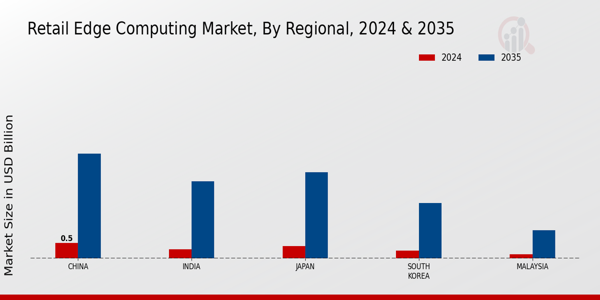The APAC Retail Edge Computing Market is experiencing significant transformation driven by the rapid adoption of digital technologies and the need for immediate data processing capabilities. As retailers across the region seek to enhance customer experiences and streamline operations, edge computing has emerged as a pivotal component in their technological strategies. This market is characterized by a mix of established players and emerging startups that contribute to an ever-evolving competitive landscape. Key factors driving competition include advancements in artificial intelligence, increasing demand for real-time analytics, and the push for improved network reliability and security.
Companies in this sector are leveraging innovative solutions to not only cater to retail needs but also to adapt to changing consumer behaviors, promoting a shift toward personalized services and omnichannel retail strategies.Tencent holds a robust position in the APAC Retail Edge Computing Market, leveraging its vast digital ecosystem and substantial investments in cloud technologies. The company's strengths lie in its extensive infrastructure and strong network capabilities, which facilitate the deployment of edge computing solutions tailored for retail applications. Tencent has been adept at integrating its services with popular retail platforms, creating synergies that enhance customer engagement and operational efficiency.
Moreover, Tencent’s commitment to innovation and its ability to harness data analytics and AI technologies provides retailers with actionable insights that drive decision-making processes. This strong foundation allows Tencent to meet the increasing demands of retailers who are keen on utilizing edge computing to optimize their operations in an increasingly competitive environment.
Hewlett Packard Enterprise (HPE) has established a noteworthy presence in the APAC Retail Edge Computing Market by providing comprehensive solutions that power edge computing initiatives for retailers. HPE's approach emphasizes hybrid cloud strategies and data-driven insights, enabling businesses to leverage their existing infrastructure while enhancing their edge capabilities. Key products such as HPE Edgeline Converged Edge Systems and HPE GreenLake showcase the company's focus on delivering integrated systems that support data processing at the edge, thus empowering retailers to enhance performance and enhance customer interactions.
HPE’s strengths stem from its expertise in IoT and analytics, allowing it to address the unique challenges faced by retailers in the APAC region. The company has also engaged in strategic partnerships and acquisitions to expand its portfolio and capabilities, ensuring that it remains at the forefront of edge computing innovations and services tailored specifically to the retail sector in APAC.













